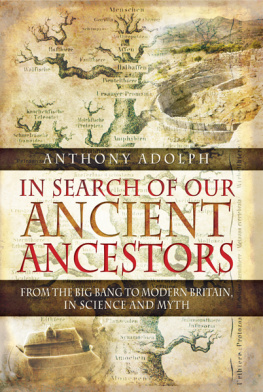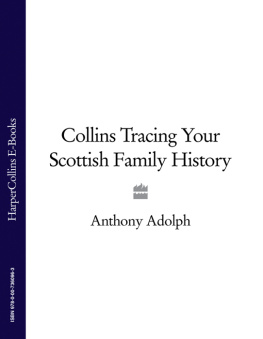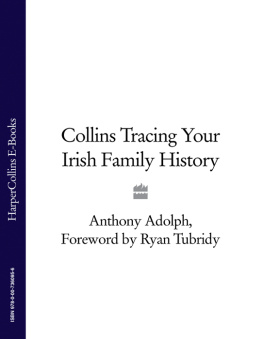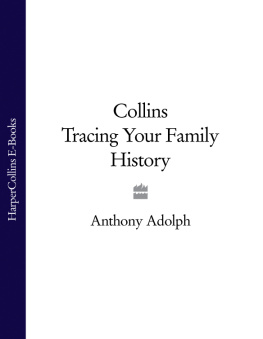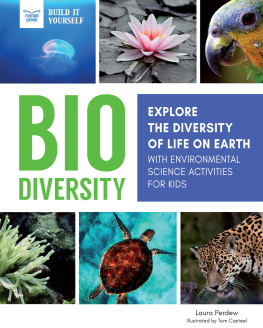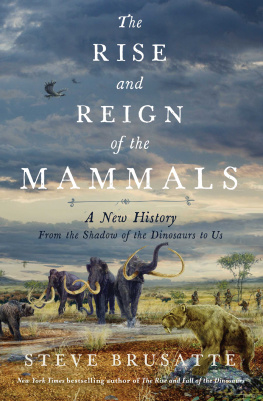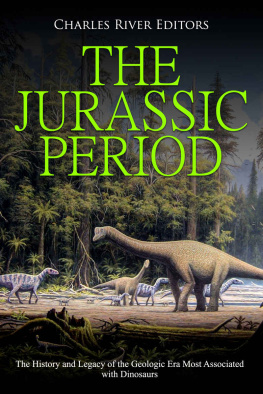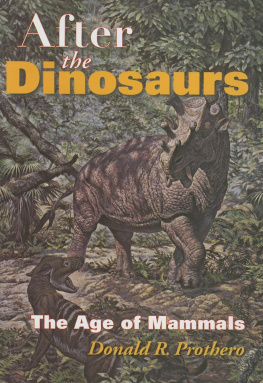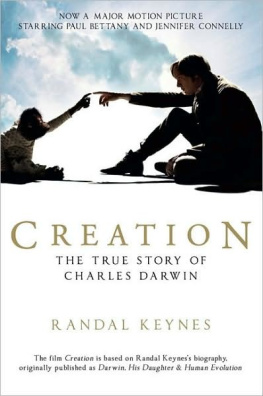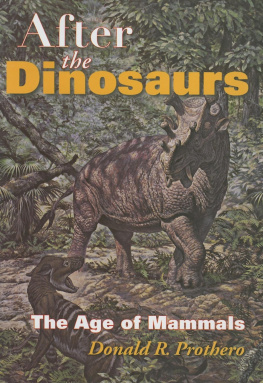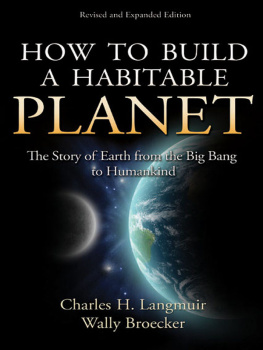Dedication
For my little cousins Matthew and Ben Lehain, Thomas and Freddy Robinson and, born just in time to be included here, Edmund Bulmer.
Illustrations
Unless otherwise credited, all drawings, diagrams and photographs are by the author.
First published in Great Britain in 2015 by
Pen & Sword Family History
an imprint of
Pen & Sword Books Ltd
47 Church Street
Barnsley
South Yorkshire
S70 2AS
Copyright Anthony Adolph 2015
ISBN: 978 1 47384 921 1
PDF ISBN: 978 1 47384 924 2
EPUB ISBN: 978 1 47384 922 8
PRC ISBN: 978 1 47384 923 5
The right of Anthony Adolph to be identified as the Author of this Work has been asserted by him in accordance with the Copyright, Designs and Patents Act 1988.
A CIP catalogue record for this book is available from the British Library
All rights reserved. No part of this book may be reproduced or transmitted in any form or by any means, electronic or mechanical including photocopying, recording or by any information storage and retrieval system, without permission from the Publisher in writing.
Typeset in Ehrhardt by
Mac Style Ltd, Bridlington, East Yorkshire
Printed and bound in the UK by CPI Group (UK) Ltd,
Croydon, CRO 4YY
Pen & Sword Books Ltd incorporates the imprints of Pen & Sword Archaeology, Atlas, Aviation, Battleground, Discovery, Family History, History, Maritime, Military, Naval, Politics, Railways, Select, Transport, True Crime, and Fiction, Frontline Books, Leo Cooper, Praetorian Press, Seaforth Publishing and Wharncliffe.
For a complete list of Pen & Sword titles please contact
PEN & SWORD BOOKS LIMITED
47 Church Street, Barnsley, South Yorkshire, S70 2AS, England
E-mail:
Website: www.pen-and-sword.co.uk
Contents
Introduction
It is of changes of shape and new forms that I am inspired to speak. Oh gods spin out for me in one continuous poem a thread of words, from the worlds beginning down to my own life!
Ovid, Metamorphoses, 1, 14
I t is written Hypocrene in English, but the Greeks pronounce it more earthily, Ip-o-kree-nee, so that you can almost hear the sharp crack in the rock as the winged horse Pegasus stamped his hoof down on the spine of Mount Helikon, causing a narrow fissure to open below, out of which bubbled fresh, cooling water. Hesiod knew the Hypocrene spring and the mythology that explained its existence and mentioned it 2,700 years ago at the beginning of his Theogony. He must have climbed that far up the tree-dotted scree of the mountain countless times, tending his goats and keeping them safe from wolves. Without the springs water his musings up there would have been far less fertile.
I had little idea who Hesiod was until I began to research this book, eleven years ago. Until then, like most genealogists, I had contented myself with tracing family lines back as far as oral history and surviving records would allow. In Britain this usually means going back to somewhere between the early 1800s and the 1500s, when parish registers started being kept. Some lines can go back further, especially when the families concerned held land. For those who can make a link back to royal lines then sometimes it is possible to trace back to the last few centuries BC before the trail goes cold. But aside from the hard, scientific evidence of original records there existed older pedigrees that seemed to connect real people with mythological characters such as Adam and Eve and the Greek gods, and that put me onto studying origin myths from around the world. Hesiods name kept cropping up, so when I found a second-hand copy of his Theogony for sale in a North London bookshop, I bought it and it changed my life. For what it contained was a family tree like no other: a continuous narrative that started with the birth of Gaia, Mother Earth, out of a primal chasm at the beginning of the world, and then came down to all her descendants, Uranos the deity of the starry heavens, the Titans, Zeus and the rest of the Olympian gods and everything else including Hesiod himself for, like many Greeks, he claimed direct descent from Zeus.
Eventually we went to Askri, not far to the east of Delphi, and found the ruins of the village where Hesiod had lived. We liked it so much that we went back again a few years later to search for the Hypocrene spring. It entailed a three-hour scramble up the loose rocks, following a series of red dots spray-painted on the boulders to mark the path, and we almost missed the spring itself when we reached the top, but in the end we found it. The continuous shifting of the Earths continental plates, which forced up Greeces mountains in the first place, has led to many rivers changing their courses, so it is not unusual to find that the springs associated with Classical temples and ancient cities have run dry. But when we lowered the black plastic bucket down on its thin chain, it came back up brimming with water. Goats bells still clang across the valleys and they still have shepherds to guide them and protect them from wolves, which we heard howling sometimes at night. Much time has passed, but gratifyingly little here has changed.
Hesiod attributed his inspiration to the nine Muses who haunted the mountain and dance on their soft feet around the violet-dark spring. But back down in the valley, looking up at the looming bulk of Helikon, I wondered whether the mountain itself might have been the Theogonys greater inspiration. Above broods the Greek sky and below the mountain sprawls out like a recumbent woman, or goddess. The union of Gaia and Uranos gave rise to an enormous family of spirits, deities and, ultimately, their human descendants, spreading out just like the mountains slopes down which the Muses danced, so Hesiod decided to write a narrative starting with sky and earth and then working down, generation by generation. His inspiration was brilliant: nobody had created a genealogical narrative like it before. It is, arguably, the third oldest surviving piece of Western literature (after Homers Iliad and Odyssey, which could be up to a century older). Scholars consider that its genealogical structure influenced the writing of the biblical Book of Genesis. It makes Hesiod the earliest genealogist whose name we know anywhere in the world. His work is the ancestor, so to speak, of my profession.
Like all genealogists, Hesiods perennial desire was to understand who he was and where he came from. He wrote of gods, Muses and mountains because they were his nearest points of reference. Had he been alive now he would probably have written a book like this and had I lived then I would, I feel sure, have attempted to write a theogony.
Something has changed between Hesiods time and ours, because now there are some very different points of reference: to the old, mythological views of our origins has been added a new, scientific one. Another factor that compelled me to research this book was the plethora of television programmes about different points in our history that identify people in the past as our ancestors but without explaining how you get from them to us, and the numerous press reports of new finds of missing links in our evolutionary story, but again without describing the fossil chain from which the connecting finds had previously been absent. A further factor still was the arrival of commercially accessible genetic testing in the late 1990s. At first most genealogists regarded it with contempt, for of course such jiggery-pokery with test tubes could never replace traditional genealogical records. Yet geneticists kept insisting that this was exactly what it could do, or at least that their findings could compliment the traditional methods, and after a while I goaded myself to learn this new subject (and persuaded the geneticists to explain it to me clearly) and soon appreciated just how important it was likely to become. Now, in 2015, genealogical research clothes the more recent generations of our family trees with names, dates and other details, but the bigger picture our individual places within the greater family tree of humanity comes from genetic testing. Genetics has even supplied a Genetic Adam and Mitochondrial Eve, to supercede, in scientists eyes, at any rate, the biblical ones.
Next page
